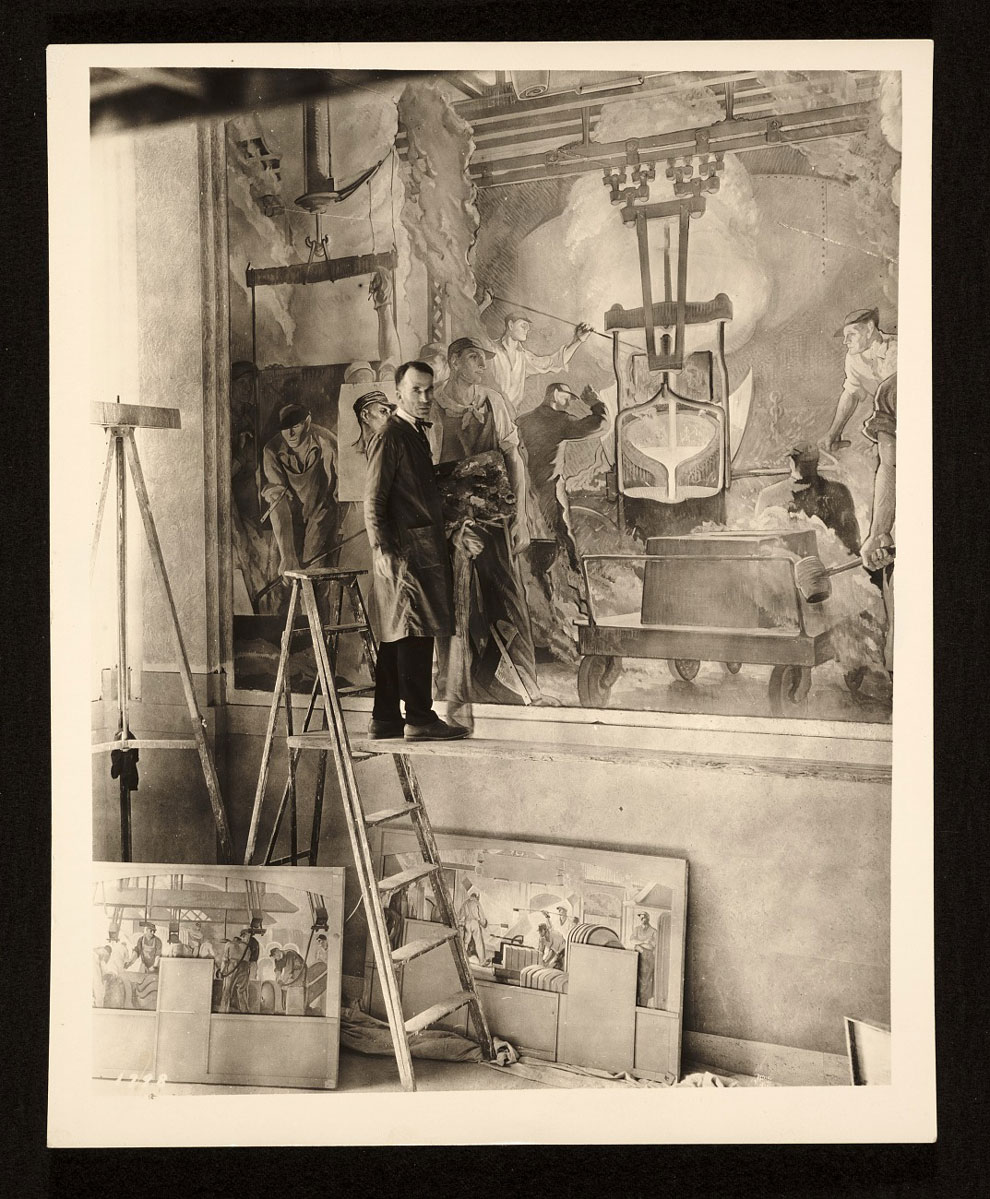People – Arthur Sinclair Covey
An Industrial Muralist
Arthur Sinclair Covey (1877-1960) An American mural painter and illustrator whose significant commissions spanned four decades. The murals gracing the walls of Kohler’s General Office depict seven scenes from inside the iron foundry, each carefully studied and sketched on location in 1924, with the final paintings installed in July of 1925.
“The subject matter interests me very much and I can paint them in a rich palette of color—so much the better."
Walter J. Kohler, the entrepreneurial industrialist and president of Kohler Co. from 1905 to 1937, had more than manufacturing and marketing plumbing fixtures and generators in his sights. He had a clear aesthetic vision, as evidenced by his planning for the company’s new administration building in the early 1920s. Not only did he oversee the conceptualization and completion of a masterful structure for the headquarters building designed by the Milwaukee architectural firm Brust & Philipp, but he also wanted the entrance to create a visual narrative that honored the work and the workers of Kohler Co.
Walter Kohler accomplished this objective by commissioning Arthur Sinclair Covey, then one of the country’s most highly regarded mural painters, to execute seven murals that depicted foundry workers at their labors. The design process began early in 1924, and the final work was completed in July 1925. Covey’s majestic murals encircled the bi-level lobby in a stunning salute to the craftsmanship for which the company is known.
The Covey murals predate, by seven years, the more well- known and controversial Diego Rivera Detroit Industry frescos that Edsel Ford commissioned for the Detroit Institute of Art. Although both Walter Kohler and Edsel Ford enlisted prominent artists, there is a significant difference in major art installations on the subject of work and workers when the commissioned pieces are situated in an art museum rather than at the site where such work is taking place. In a handwritten letter to Walter Kohler dated December 18, 1923, Covey communicated that he had been studying the blueprints for the headquarters entry and found that “the two spaces . . . indicated for mural paintings are of fine proportions. They should be very impressive at either end of the lobby. The subject matter interests me very much and I can paint them in a rich palette of color—so much the better.”
The two major panels to which Covey referred—Pouring a Mold and Tapping a Cupola—both convey the visual images of men working in harmony at Herculean tasks with one of the verbal messages that Walter Kohler wanted to herald, “He Who Toils Here Hath Set His Mark.” The smaller panel in the upper lobby facing the front door fits between and continues over and around two doorways that lead into the vestibule. Depicting men engaged in Enameling a Bath Tub, this dynamic image rendered in blues, relieved by brilliant oranges, and enlivened by intense white greets the onlooker with these words: “To the Men/Whose Cooperation Has Made This Organization/This Hall is Dedicated.”
The marriage of heroic figures and articulated values demonstrates an appreciation for those who toil and the physically demanding work that takes place in the buildings on the site. Covey wrote to Kohler in February of 1924 as he “plunged into the work,” very likely after a visit to the foundry, since he mentioned “while I am still fresh in my impressions.” He continued that he felt “that much of inspiration comes from your interest in the result—and your desire that it shall possess an appeal to the men who work.”
Before the Kohler-commissioned murals were installed in the lobby, the larger two—Pouring a Mold and Tapping a Cupola—were awarded a gold medal in 1925 by the Architectural League of New York at the International Exposition of Architecture and the Allied Arts at the Grand Central Palace in New York City. That same year, studies for the five major panels of the murals were featured in full color in a Kohler publication, Kohler Village: A Hopeful and Stimulating Example of American Community Life.
Covey’s initial success with Kohler Co. led to further recognition. From 1926 to 1929, Covey served as President of the National Mural Painters Society. He also worked on other commissions for the Kohler organization, including designs proposed for the Kohler New York showroom in 1929, which were not, in the end, installed; murals on metal for the Kohler exhibit at the Wisconsin State Centennial Exposition in 1948; and a design for a new Kohler medallion in 1957, just three years before his death. Arthur Covey’s successive work for Kohler Co. covered the most productive period of his long career, but none equaled the power of the original murals you can still see today in the lobby of the General Office building at Kohler.
https://content.wisconsinhistory.org/digital/collection/wmh/id/50222
